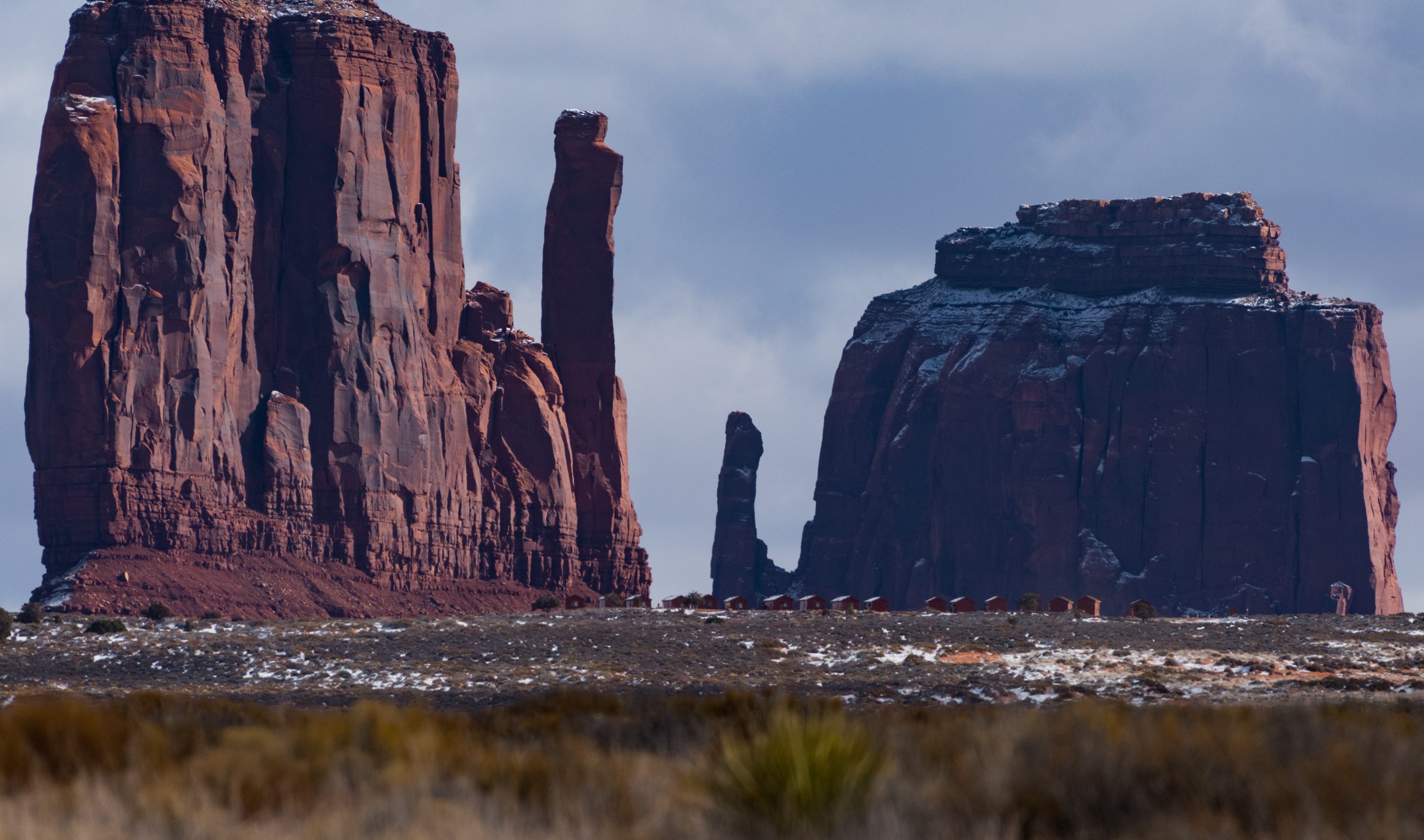
Famous.
Iconic.
Must Visit.
Certainly, a special place to Navajo people.
For millions of years, the natural erosion left a portion of what was once a part of the Rocky Mountains. Our ancestors later inhabited the region that is now known as the Four Corners of the Southwest.
Many of the stunning buttes in and around Monument Valley rise from 400 to 1,000 feet!
When clouds are present, the landscape changes and only adds more energy to the region.
Even on severe clear days, filling the composition with large monoliths isn’t a difficult task.
Known as Tse’ Bii’ Ndzisgaii which means Valley of the Rocks, it is a living landscape.
With families, animals and wildlife about, it is a living park!

Navajoland covers roughly 26,000 square miles and of that, Monument Valley covers about 143 square miles!
The landscape is filled with wonderful desert fauna, towering Navajo Sandstone formations and large sand dunes.
There are plenty of elements to lead the photographer and viewer into prime subjects of the land.
Minute details will range from lizard tracks to petroglyphs and of course, the towering sandstone walls.
Sweet light in Monument Valley is best photographed in the morning and evenings. In the summer, this could make for some real long days since sunrise is super early and sunset is quite late. The natural colors can change depending on temperature and natural elements from the atmosphere.
The natural and vibrant colors from the golden light to the cool somber and rich reds will be present. There are fantastic opportunities to photograph the light in undisturbed environments.
I often wonder what the ancient ones pondered about when they awoke to such majestic light!
This will be your opportunity to take a portion of Navajoland home with you.
Aside from my home area, I’ve visited Monument Valley numerous times from my youth to my professional days a photographer. I am happy to share the technique and how to approach Monument Valley from behind the lens and camera system.

Some tips about photographing Monument Valley can include:
- Finding the right guide: Subscribe below and we’ll send you which outfit to use for the best approach to photography and cultural stories of the area. *Plus, you’ll get a 10% discount to use when you book a tour!
- During the summer, the sweet morning light hits very early because there are no other butte’s or formations that block the sunrise light. To the East of Monument Valley, it is nearly flat until the horizon! Arrive early to your location.
- IF you have an iPhone or a smart phone, using wide angle or telephoto lenses for you phone can help tremendously. When you crop an image, you begin to also cut away the resolution. Here’s an example of using a lens from OlloClip. (Tip: For locations in and around Monument Valley, using the wide angle and telephoto set will help you TREMENDOUSLY! Click here to see the details at Amazon.com)

- Most of the sand dune images use wide angle lenses and stopping down between f/11 to f/18 (Depending on your lens, sharpness at different depths of field will increase your overall clarity.)
- If you’re able to take a tour and get on a high vista, using a telephoto lens will help you. The sunrise image below was created using a 200mm lens.

- The image below was created using a 500mm lens and being very low to the ground… and being about 3.5 miles away from the Mittens:

- Lastly, don’t forget to stay out a little late and find a good composition. Creating a great silhouette near here will be great because you are far from any major light source. Moab is probably the closest big city but that is still several hours away. Stay out and create good Milky Way exposures!

If you would like to photograph Monument Valley with us during the cooler times of the year which often less travelers in the area, click here for the Monument Valley photography workshop details.
If you have been to Monument Valley and would like to be featured on our Instagram, use #VisitNavajolandMV and we will be very happy to feature your image and memory of the trip!

